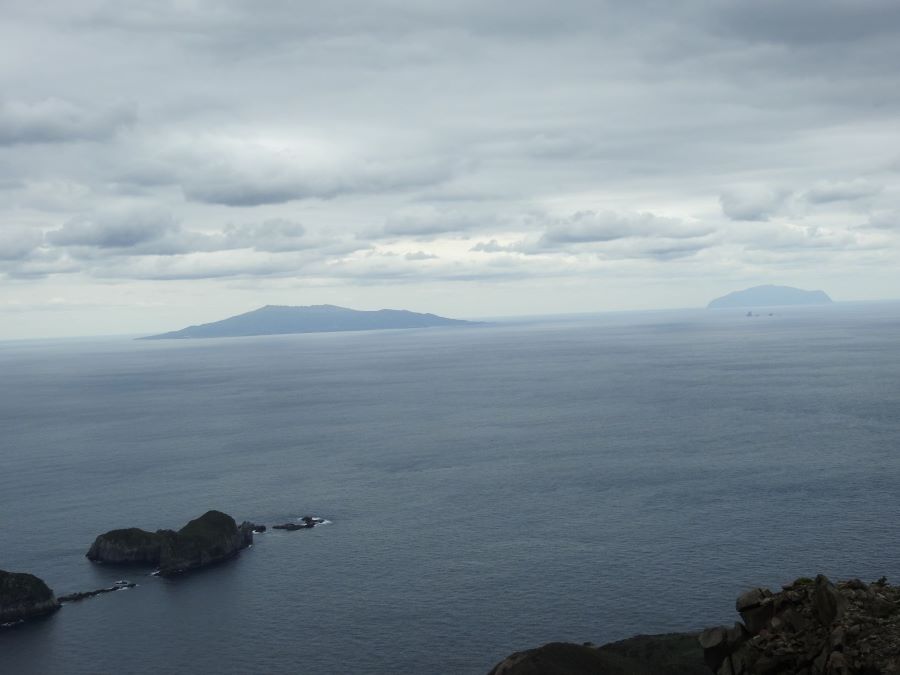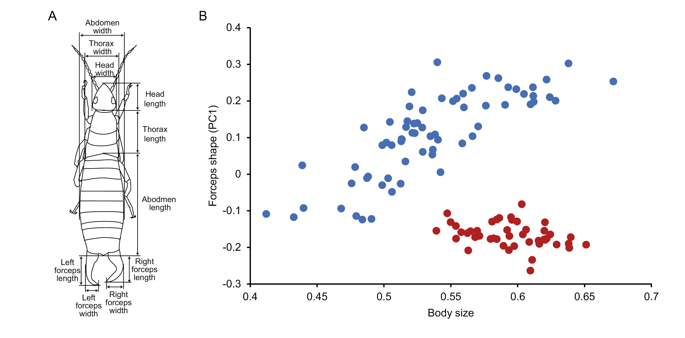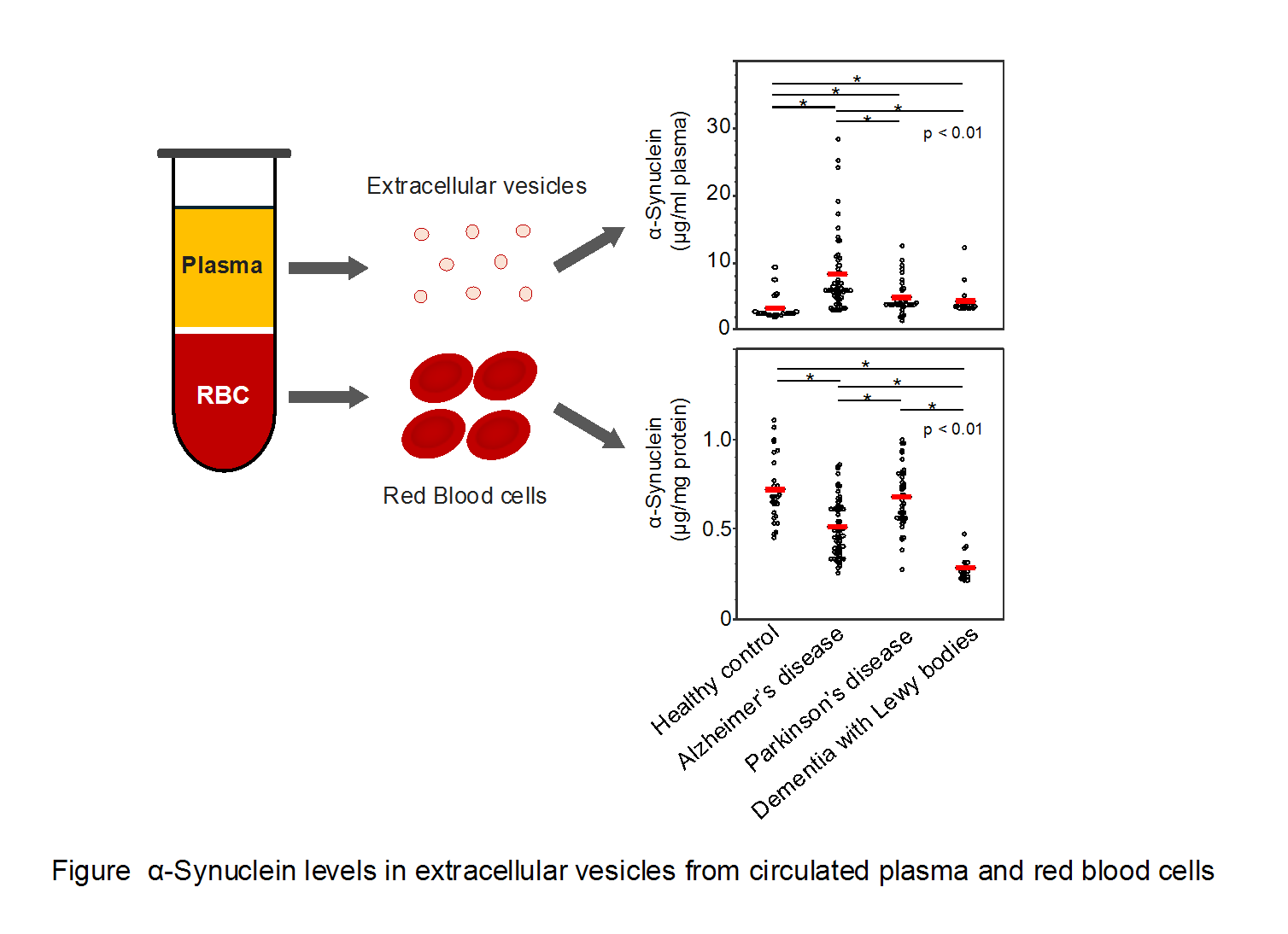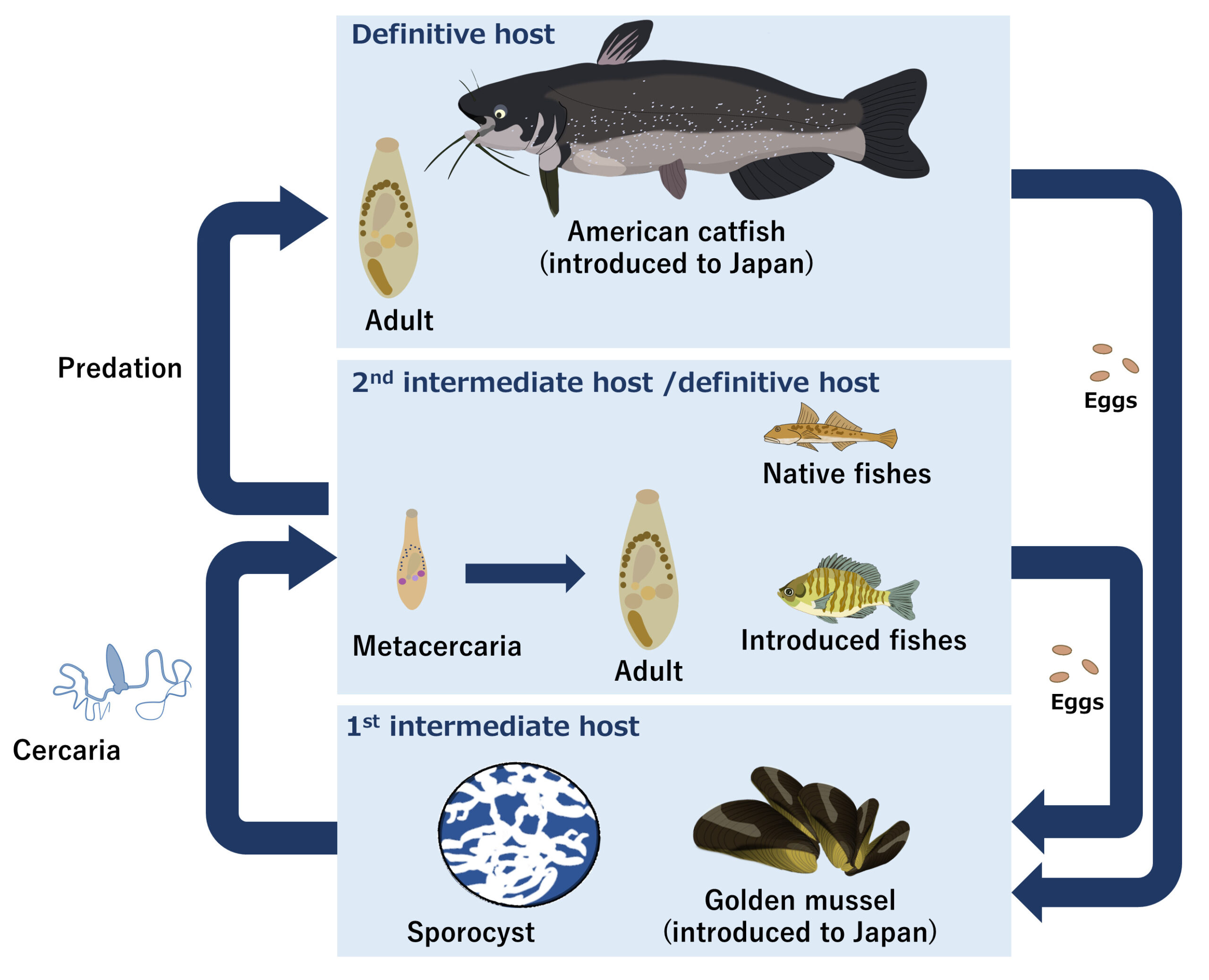Evolutionary Biology of the Izu Islands Revealed after 40 Years of Research
~ A 40-year study revealed the evolutionary biology of the Izu Islands, where snake predation pressures and global warming have led to a rise in lizard body temperatures ~

A research group led by the University of Hong Kong, Tohoku University, and Toho University studied Okada’s five-lined skink on the Izu Islands and discovered that on islands where their predators, the Japanese four-lined rat snakes are present, their body temperature during activity is higher and their leg shape is longer. They also found that the body temperature of Okada’s five-lined skink during activity is increasing due to global warming. These results were published on January 6, 2021, in Ecology Letters, which is an academic journal in the field of ecology.

Figure 1: Okada’s five-lined skinks on Hachijo Kojima. The lizard maintains its body temperature by sunbathing on the ground in the forest (Photo taken on May 18, 2018 ©Masami Hasegawa)
Key Points
- On islands that are inhabited by the Japanese four-lined rat snakes, which are predators, the body temperature of Okada’s five-lined skink during activity is higher and their hind legs are longer.
- The body temperature of Okada’s five-lined skink has increased by 1.3°C over the past 40 years due to rapid global warming in recent years.
- Since the body temperature of Okada’s five-lined skink depends largely on predation pressures, and the presence of predators raises their body temperature, global warming may further accelerate the change in the prey–predator relationship in these ectothermic animals.

Figure 2: Striped snake on Kozushima Island. A Japanese four-lined rat snake waiting to ambush Okada’s five-lined skinks. (Photo taken on May 5, 2013, © Hasegawa Masami)
The success of predator avoidance depends not only on the prey, but also on the predator’s physiological and behavioral responses to heat gain. Over a 40-year period from 1981 to 2019, the research group conducted field studies on the Izu Islands to investigate the effects of the presence or absence of a predator, the Japanese four-lined rat snakes, on the physiological, thermal, and morphological responses of a prey species, Okada’s five-lined skinks. The results showed that the body temperature of Okada’s five-lined skinks on the islands in the presence of the Japanese four-lined rat snakes was approximately 2.9°C higher than that of Okada’s five-lined skinks on the islands without the Japanese four-lined rat snakes, both 40 years ago and today. In addition, the length of the hind legs played a central role in the speed at which Okada’s five-lined skinks escaped from the Japanese four-lined rat snakes, and positive natural selection on the length of the hind legs was observed on the islands with Okada’s five-lined skinks. They also found that the body temperature of Okada’s five-lined skinks increased by 1.3°C compared to 40 years ago. These results indicate that the Okada’s five-lined skinks on the islands where there are the Japanese four-lined rat snakes have evolved to keep their body temperature high and to run faster, thereby avoiding predation by Japanese four-lined rat snakes. However, in light of the rapid acceleration of climate change in recent years, further warming could irrevocably and dramatically alter prey-predator relationships that depend on external temperatures.

Figure 3: Islands of the Izu Archipelago Miyakejima (left: island without snakes) and Mikurajima (right: island with Japanese four-lined rat snakes) as seen from Kozushima, where Japanese four-lined rat snakes are present. Okada’s five-lined skinks are found on all these islands. (Photo taken April 29, 2019 © Hasegawa Masami)
READ MORE RESEARCH NEWS - SCIENCE
Undergraduate Programs
– Medicine
– Pharmaceutical Sciences
– Science
– Nursing
– Health Science
Graduate Programs
–Medicine
–Pharmaceutical Sciences
–Science
–Nursing
RESEARCH
– News
– Guidelines & Policies
– Support Offices
– Facilities
– Security Export Control
Non-Degree Programs
– Clinical Elective Program
– International Physician Observership Program





